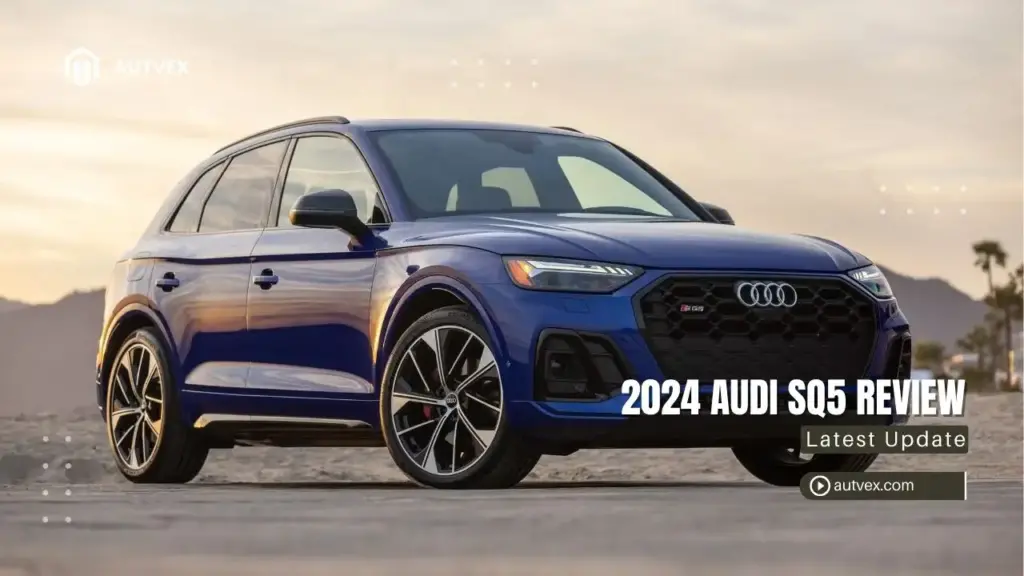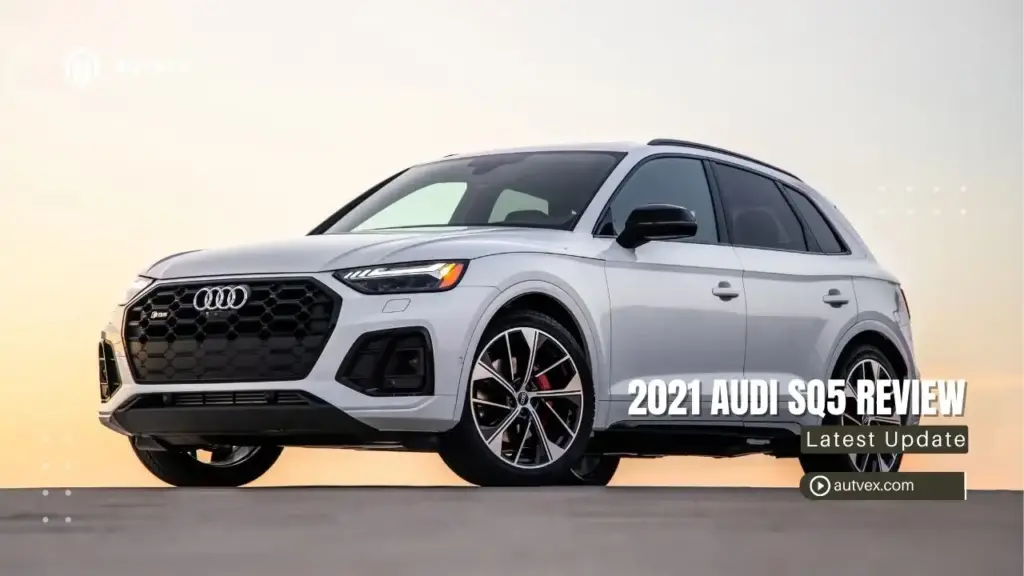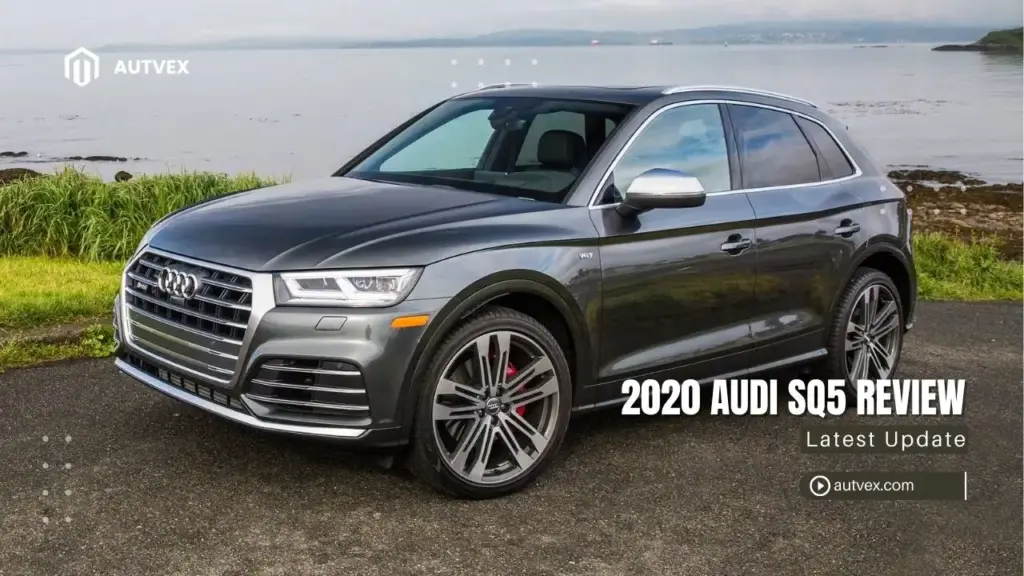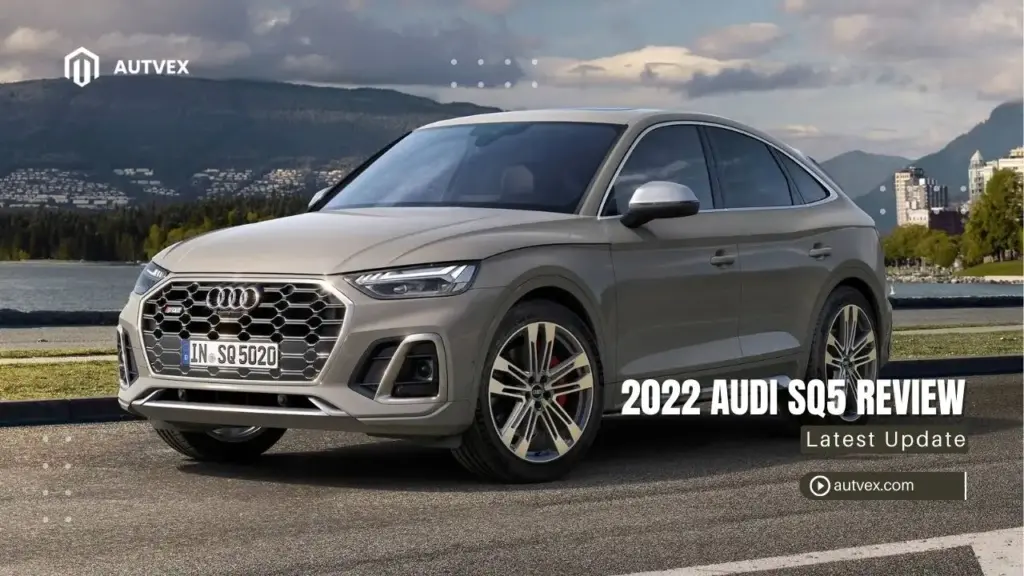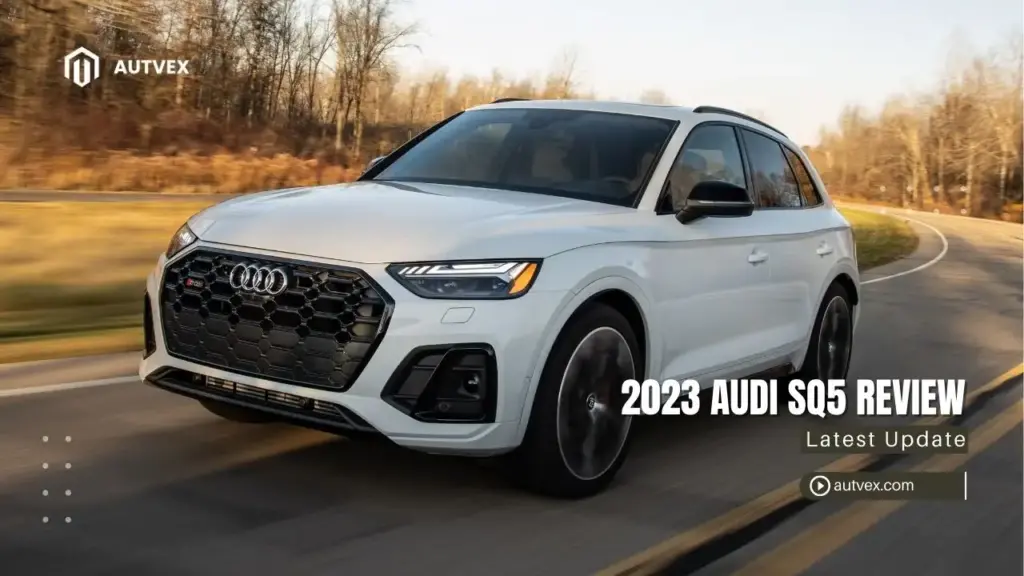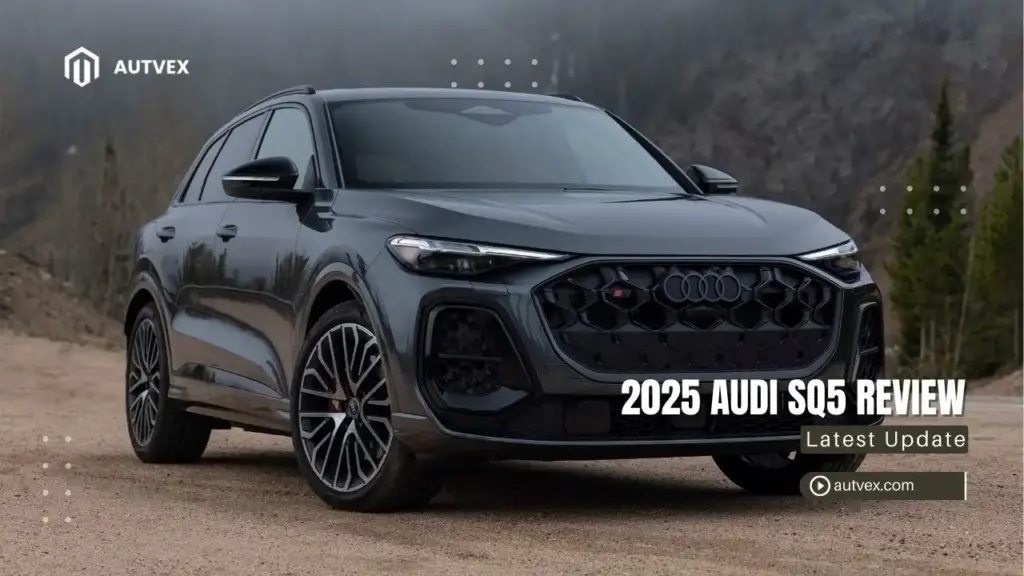You may also like:
The 2024 Audi SQ5 delivers 349 horsepower and refined German luxury starting at $57,700, making it a compelling choice for American buyers seeking performance without extreme pricing[1]. With enhanced safety features, improved technology integration, and standard Quattro AWD, this performance SUV addresses previous generations’ shortcomings while maintaining Audi’s reputation for premium build quality. The SQ5 excels for affluent professionals prioritizing balanced driving dynamics over maximum cargo space or ultimate fuel efficiency, though reliability concerns require careful consideration.
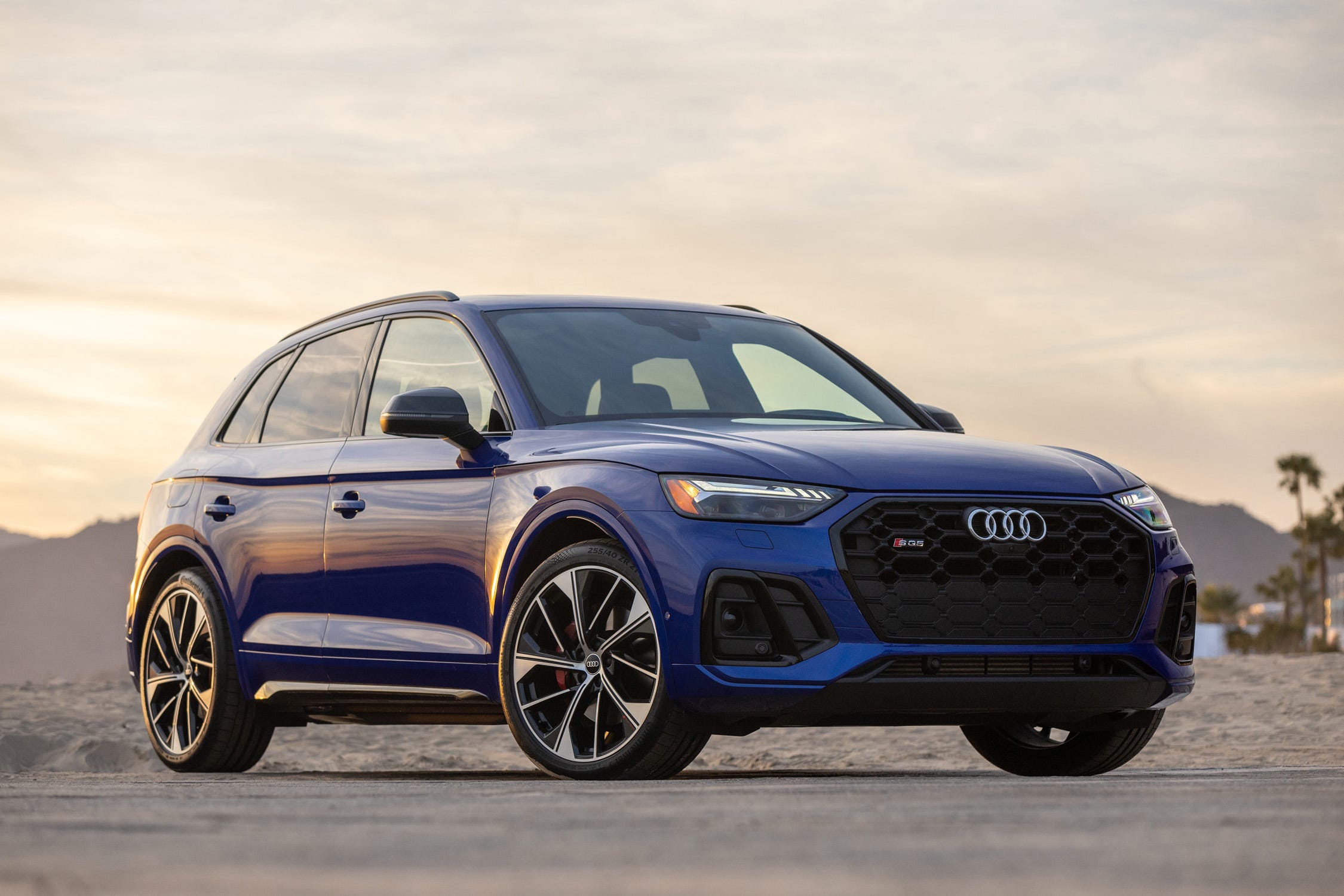
2024 Audi SQ5: Quick Overview & What’s New
Essential US Specifications & MSRP
Quick Reference Specs Table (Product Schema Ready)
| US Market Specification | 2024 SQ5 |
|---|---|
| Starting MSRP | $57,700 (Premium trim)[1] |
| Mid MSRP | $62,895 (Premium Plus)[2] |
| Top MSRP | Prestige trim (~$68,000) |
| Powertrain | 3.0L turbo V6 quattro AWD[1] |
| Total System Power | 349 hp / 369 lb-ft[1] |
| EPA Fuel Economy | 19 city / 24 highway / 21 combined[2] |
| 0-60 mph | 4.7 seconds[1] |
| Top Speed | 155 mph (electronically limited) |
| Fuel Type | Premium gasoline required |
| Towing Capacity | 4,400 lbs |
| US Safety Rating | IIHS testing pending |
What’s New for 2024 US Model Year
The 2024 Audi SQ5 introduces meaningful updates targeting American luxury buyers seeking enhanced safety and convenience features. Standard safety technology across all trim levels now includes lane-keep assist, enhanced traffic sign recognition, and adaptive cruise control with traffic jam assist addressing US highway conditions[1].
Interior enhancements include the heated steering wheel featuring hands-on detection technology, while the myAudi app gains remote start functionality and compatibility with Amazon Music, Spotify, and other third-party services preferred by American consumers. These updates reflect Audi’s understanding of US market preferences for comprehensive connectivity[1].
Exterior updates feature the introduction of Arkona White paint color replacing Ibis White from previous years, while maintaining the distinctive design language with narrow matrix-style LED headlights and prominent definition lines that distinguish the SQ5 from mainstream Q5 models[1].
Target American Buyer Profile
The 2024 SQ5 appeals to affluent American professionals aged 35-55 seeking performance luxury without the extreme pricing found in dedicated sports cars. These buyers prioritize German engineering quality, advanced safety technology, and distinctive styling over mainstream luxury alternatives available in the competitive SUV segment.
Primary demographics include tech-savvy consumers valuing balanced performance capability for diverse US driving conditions, from metropolitan commuting to interstate highway travel. They typically accept premium fuel requirements and higher maintenance costs associated with German luxury vehicles in exchange for build quality and brand prestige that resonate in American business and social contexts.
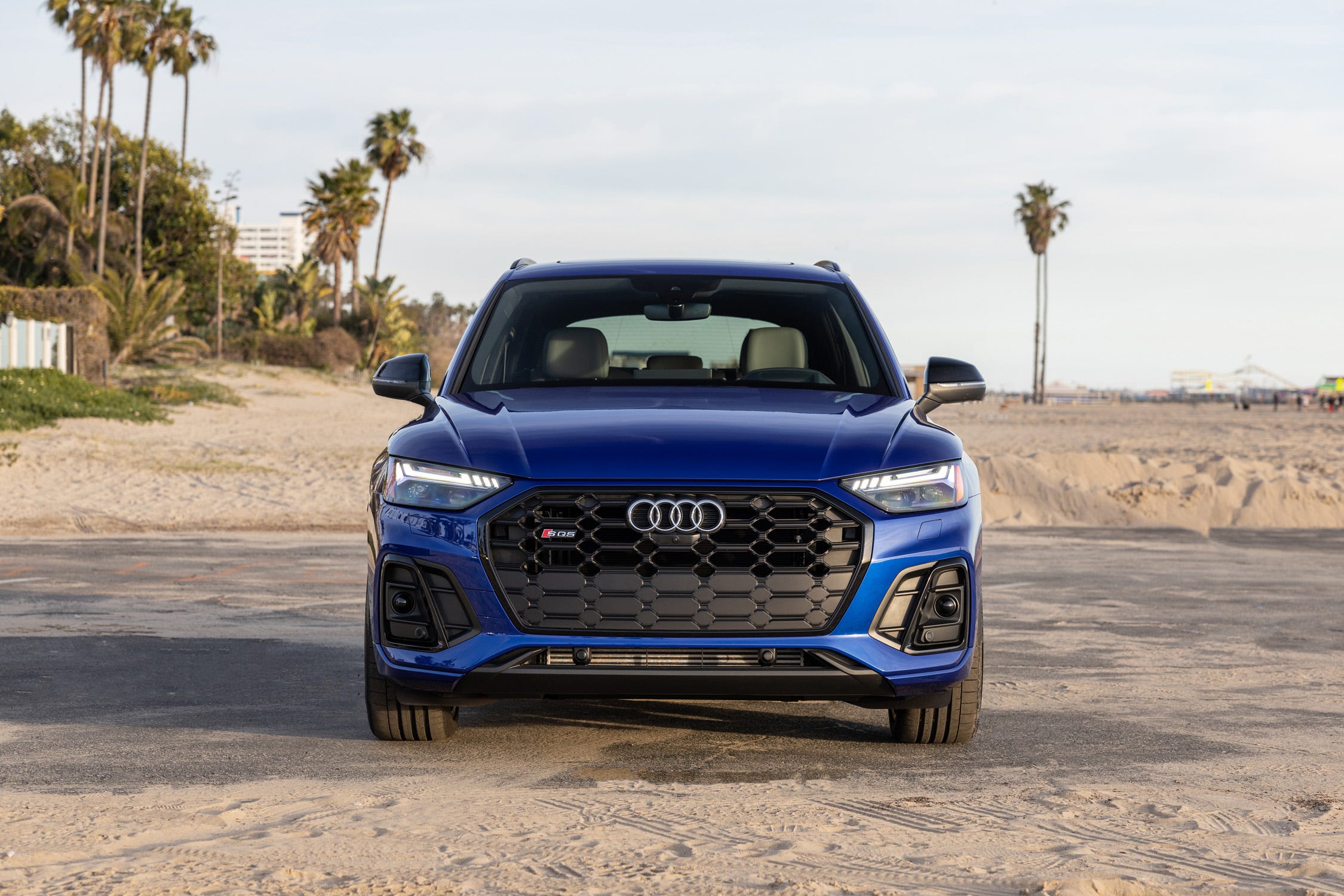
Performance & Real-World MPG: US Highway Focus
Enhanced V6 Turbo Powertrain for American Roads
The heart of the 2024 SQ5 features a refined 3.0-liter turbocharged V6 producing 349 horsepower and 369 lb-ft of torque, representing the performance flagship of the Q5 lineup. This powerplant connects to an eight-speed Tiptronic automatic transmission with standard Quattro all-wheel drive for confident performance across diverse American driving conditions[2][1].
Audi achieves 0-60 mph acceleration in 4.7 seconds, providing compelling highway merging capability and confident interstate cruising performance essential for American buyers navigating busy traffic corridors. The enhanced output delivers engaging driving dynamics while maintaining the refinement expectations that luxury buyers demand from German automotive engineering[1].
Power delivery characteristics emphasize smooth, linear acceleration rather than aggressive launch dynamics, appealing to conservative buyers prioritizing daily usability over track-focused performance. The system provides adequate capability for towing recreational equipment up to 4,400 pounds, enabling American outdoor activities from boat trailers to camping equipment transport.
EPA Ratings vs Real-World US Highway Performance
EPA certification yields ratings of 21 combined mpg (19 city/24 highway) for the 2024 model, representing competitive efficiency within the performance luxury segment. Real-world testing by Car and Driver achieved an impressive 28 mpg during their 75-mph highway run, handily beating the 24 mpg EPA highway rating[3][2].
The SQ5 falls 4 mpg short of the base Q5’s 25 mpg combined rating, representing a reasonable trade-off for the added performance capability that appeals to American buyers seeking spirited driving experiences. Annual fuel costs will exceed mainstream alternatives due to premium gasoline requirements, though highway efficiency often surpasses EPA estimates during real-world American driving scenarios[3].
Combined efficiency of 21 mpg places the SQ5 competitively within its performance luxury segment, aligning with BMW X3 M40i and Mercedes-AMG GLC 43 competitors. American buyers prioritizing maximum efficiency should consider the standard Q5 alternative or emerging hybrid competitors entering the luxury SUV market[3].
Quattro AWD Performance for American Weather Diversity
Standard Quattro all-wheel drive provides confidence across America’s diverse climate conditions, from northeastern winter driving to southwestern heat management. The system delivers instantaneous power distribution maintaining traction during seasonal weather challenges common across US regions where climate variation demands adaptable vehicle capability[1].
Enhanced chassis tuning includes adaptive suspension across all trim levels, with the available S Sport package adding sport rear differential with electronic torque vectoring for more engaging handling characteristics. This addresses previous criticisms regarding soft dynamics compared to BMW and Porsche competitors that American automotive journalists frequently cite[1].
The system provides confident performance during American weather extremes while maintaining comfort expectations for daily commuting scenarios common in metropolitan areas across diverse US climates, from humid southeastern conditions to dry western mountain regions.
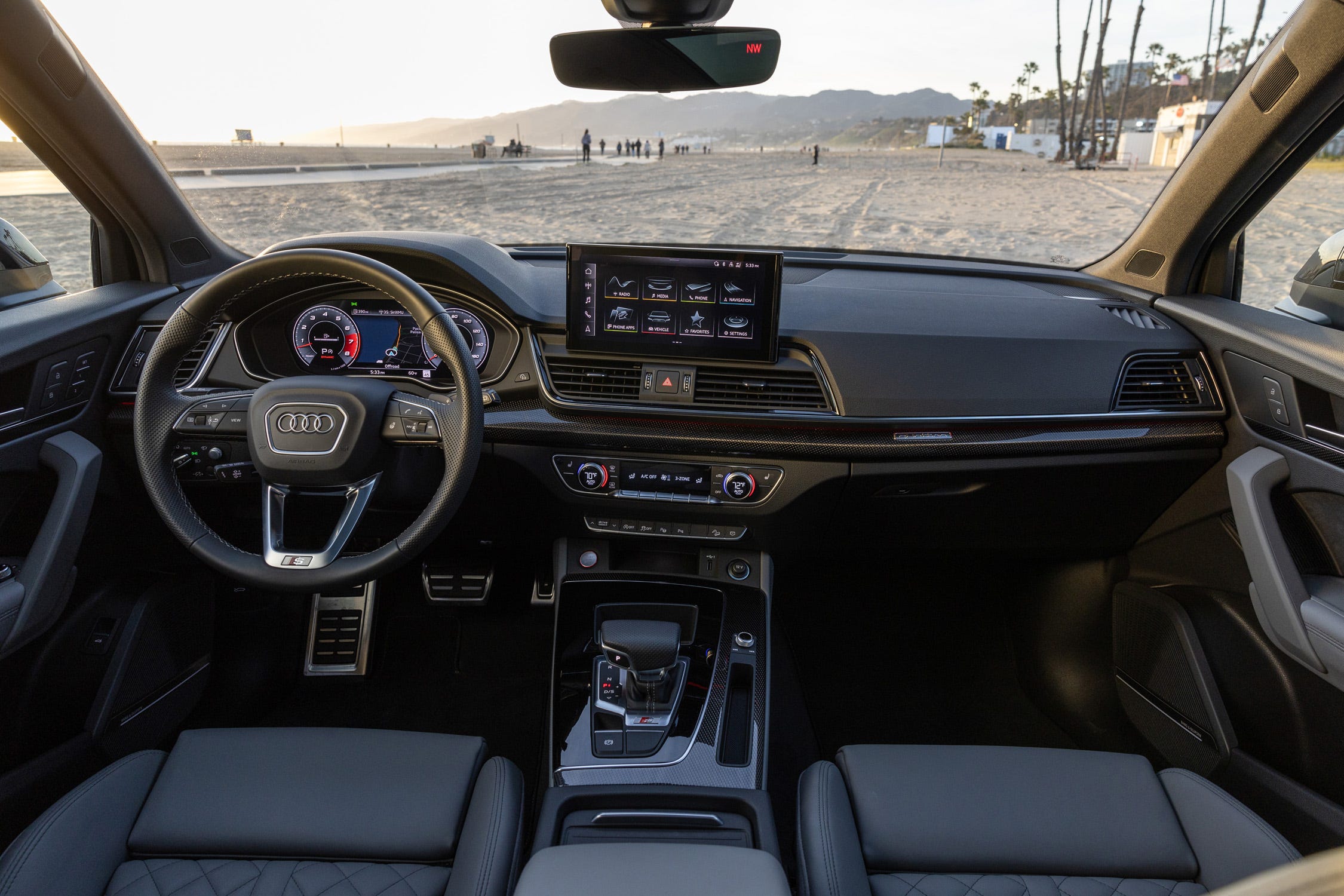
Interior Technology & American Luxury Expectations
Cabin Design Meeting US Premium Standards
The 2024 SQ5 interior emphasizes traditional luxury appointments with high-quality materials throughout the five-passenger cabin. Heated, power-adjustable front seats come standard across all trim levels, with optional diamond-stitched quilted leather coverings available for buyers seeking maximum luxury presentation that meets American expectations for premium vehicles[3].
Three-zone automatic climate control addresses American family preferences for individualized comfort zones during extended travel across diverse regional conditions. The heated steering wheel, now standard for 2024, provides cold climate functionality for northern US buyers while adding hands-on detection technology that enhances safety system operation[1].
Build quality maintains Audi’s reputation for German precision and attention to detail, with tight panel gaps and premium material integration throughout the passenger compartment appealing to conservative luxury buyers who prioritize craftsmanship over flashy design elements[3].
Technology Integration for US Consumer Preferences
The infotainment system provides comprehensive connectivity features while avoiding overly complex interfaces that frustrate American buyers accustomed to smartphone simplicity. Standard features include wireless connectivity and intuitive operation prioritizing physical controls for essential functions that American consumers prefer over touchscreen-only operation[1].
The updated myAudi app now includes remote start functionality and compatibility with popular American streaming services including Amazon Music and Spotify, addressing connectivity preferences of US consumers who demand seamless integration with existing digital ecosystems. Enhanced traffic sign recognition and adaptive cruise control cater specifically to American highway driving scenarios[1].
Available technology packages add premium features like 360-degree camera systems and advanced driver assistance, appealing to American preferences for comprehensive safety and convenience features during urban driving and parking scenarios common in crowded metropolitan areas.
Ergonomics and Comfort for American Commuting
Sport seats with substantial bolstering provide excellent support during dynamic driving while maintaining comfort for extended American commute distances typical of suburban lifestyles where daily drives often exceed 30 minutes each direction. Optional ventilated front seats and heated rear seats enhance climate comfort across diverse US temperature conditions[3].
Storage solutions accommodate American lifestyle requirements with practical organization for personal items and travel necessities. The cabin design prioritizes usability over dramatic styling, appealing to conservative luxury buyers seeking long-term satisfaction rather than fashion-forward aesthetics that may become dated quickly.
Cargo capacity of 27 cubic feet behind rear seats provides adequate space for moderate American family needs, though Car and Driver testing reveals the SQ5 ranks near the bottom of its class for real-world carrying capability compared to competitors like the BMW X3 and Mercedes GLC[3].
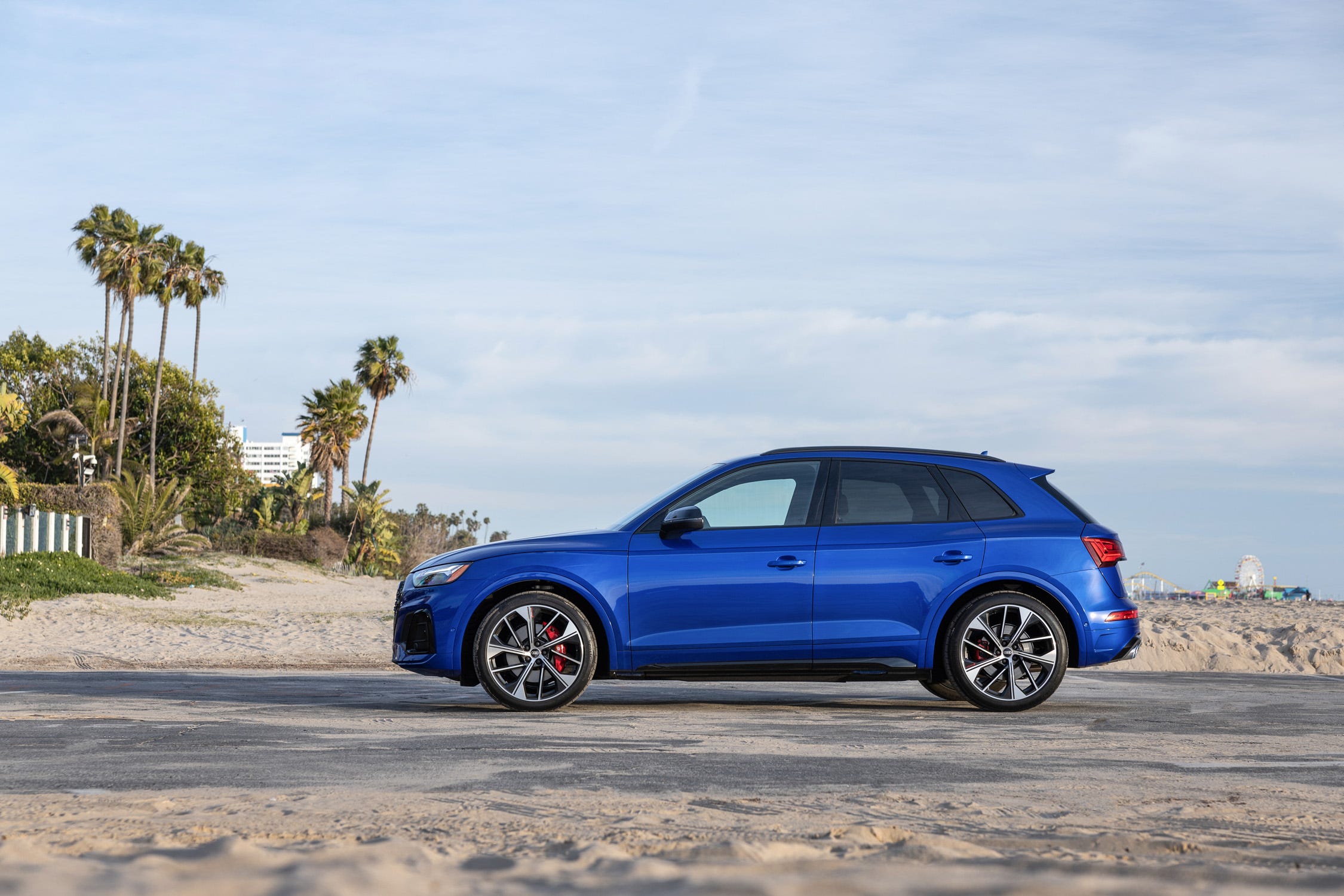
Safety Ratings & Long-Term Reliability for US Ownership
Complete US Safety Assessment and Ratings
IIHS and NHTSA Performance (FAQ Schema Ready)
| Safety Test Category | 2024 SQ5 Result |
|---|---|
| IIHS Overall Rating | Testing pending |
| IIHS Small Overlap Front | Testing pending |
| IIHS Side Impact | Testing pending |
| IIHS Moderate Overlap Front | Testing pending |
| NHTSA Overall Rating | Testing pending |
| Front Crash Prevention | Standard across trims[1] |
The Insurance Institute for Highway Safety has not yet published comprehensive safety ratings for the 2024 SQ5, requiring buyers to rely on Q5 platform history and standard safety technology assessment for guidance regarding crash protection capabilities. This limitation affects American buyers who prioritize verified safety performance data in their purchase decisions.
Standard US Safety Technology Package
Comprehensive driver assistance features come standard across all trim levels for 2024, including emergency front braking, blind spot monitoring, and adaptive cruise control with traffic jam assist. These systems address typical American driving scenarios from urban traffic navigation to highway travel across long distances[1].
Lane-keep assist and enhanced traffic sign recognition provide highway safety during extended American road trips across interstate corridors. The systems adapt to American traffic patterns and signage standards for optimal functionality in US driving conditions, distinguishing the SQ5 from competitors with less localized calibration[1].
Pre-sense collision systems can be adjusted for sensitivity, addressing owner feedback about intervention characteristics during normal driving conditions common in American metropolitan areas with varied traffic patterns and driving styles that may trigger false alarms.
Long-Term Reliability Data from US Sources
Consumer Reports expects the 2024 Q5 platform “will be less reliable than the average new car” based on data from recent model years, suggesting cautious assessment for buyers prioritizing dependability. This prediction relies on 2022-2024 model reliability patterns that show concerning trends for Audi ownership[4].
However, owner surveys indicate 95% of consumers recommend the SQ5, with reliability generally receiving positive feedback despite some areas noted for improvement by early adopters. The discrepancy between professional assessments and owner satisfaction requires individual consideration of personal reliability priorities[5].
The standard 4-year/50,000-mile warranty provides comprehensive coverage meeting US market expectations, supported by Audi’s established American dealer network for nationwide service accessibility across major metropolitan areas where most luxury buyers reside.
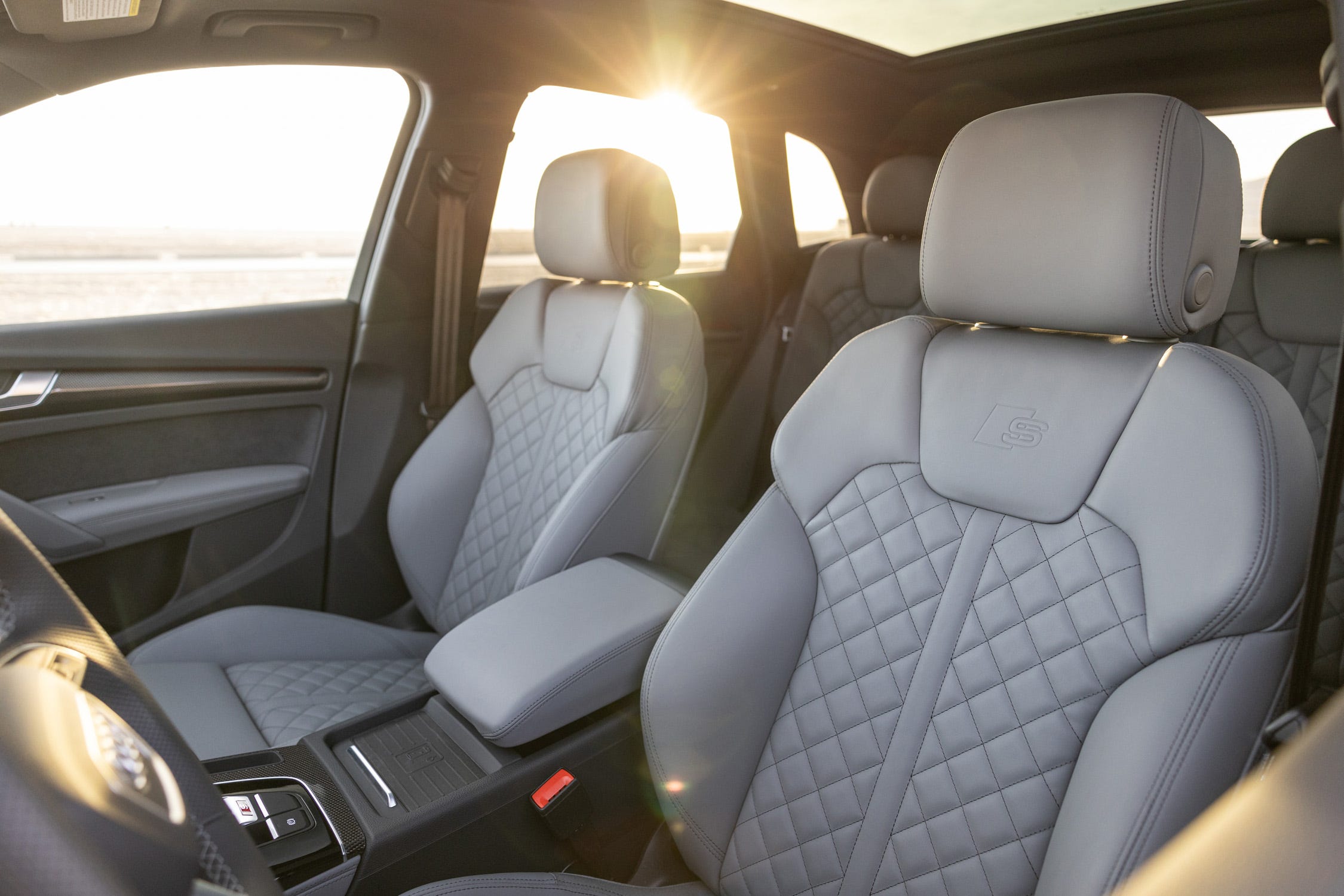
Cargo Space & American Family Practicality Analysis
Real-World Storage Capacity for US Lifestyles
The 2024 SQ5 provides 27 cubic feet of cargo space behind the rear seats, though Car and Driver testing reveals this ranks near the bottom of its class for real-world carrying capability. The SQ5’s cargo area accommodated the same six carry-on boxes as the Porsche Macan’s smaller 18-cubic-foot compartment, highlighting inefficient space utilization[3].
Loading height sits at conventional SUV levels, facilitating easier access compared to higher-riding truck-based alternatives popular in American markets. Under-floor storage compartments help organize essentials for US road trips, though total volume remains modest compared to three-row alternatives that many American families prefer for maximum versatility.
The Sportback variant reduces cargo capacity to 25 cubic feet behind seats and 52 cubic feet total when folded, limiting practicality for buyers prioritizing maximum storage versatility for recreational equipment or large family needs common in American suburban lifestyles[3].
American Family-Friendly Features Assessment
Five-passenger seating capacity suits average US household sizes with standard LATCH child safety seat anchors meeting current federal safety requirements. Rear seat comfort receives positive feedback from owners, with adequate legroom and headroom for adult passengers during extended American travel distances that commonly exceed 500 miles for family vacations.
Three-zone climate control ensures passenger comfort during American family trips across diverse regional conditions from humid southeastern summers to cold northern winters. Available heated rear seats enhance utility for regions experiencing harsh seasonal conditions that define much of the American climate experience throughout the year.
Premium seat packages add massaging and ventilation functionality, appealing to luxury buyers prioritizing comfort during long-distance interstate travel common in US driving patterns where cross-country trips remain popular for both business and leisure purposes.
Regional US Lifestyle Suitability
Weekend recreation gear capacity accommodates moderate American outdoor activities, though buyers requiring maximum versatility should consider larger alternatives like three-row SUVs popular in American markets. The 4,400-pound towing capacity enables boat trailers and camping equipment transport for recreational use across diverse American outdoor destinations.
Ground clearance provides confidence for light recreational access including unpaved camping routes common in national parks, though serious off-road capability requires dedicated platforms designed for aggressive trail use rather than luxury-focused vehicles optimized for on-road refinement and performance.
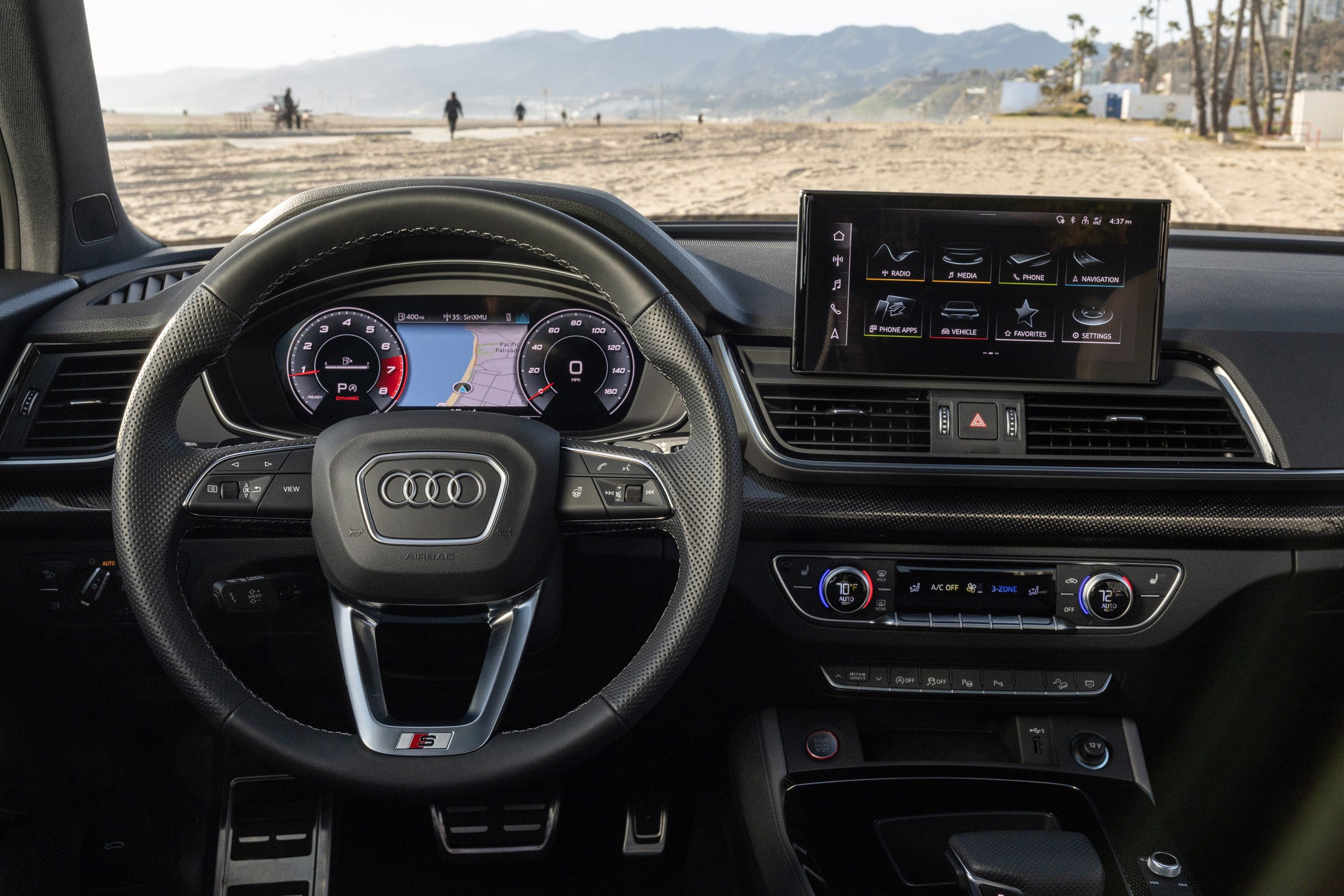
2024 Audi SQ5 vs Key US Market Competitors
SQ5 vs BMW X3 M40i: German Performance Battle
Direct US Market Comparison
| Comparison Factor | SQ5 | X3 M40i | Winner |
|---|---|---|---|
| US MSRP Starting | $57,700[1] | ~$62,000 | SQ5 |
| Horsepower | 349 hp[1] | 382 hp | BMW |
| EPA Combined | 21 mpg[2] | 23 mpg | BMW |
| 0-60 mph | 4.7 seconds[1] | 4.4 seconds | BMW |
| Towing Capacity | 4,400 lbs | 4,400 lbs | Tie |
| Interior Space | 27 cu ft[3] | 28.7 cu ft | BMW |
The BMW X3 M40i offers superior performance credentials and fuel economy but commands higher pricing that stretches budgets for value-conscious luxury buyers. The SQ5 provides competitive positioning with established Audi luxury appointments and lower acquisition costs that appeal to buyers seeking German prestige without premium pricing.
SQ5 vs BMW X1: Value Performance Alternative
Performance and Efficiency Comparison
| Category | SQ5 | X1 | Advantage |
|---|---|---|---|
| US MSRP | $57,700[1] | $42,525[6] | BMW |
| Total Power | 349 hp[1] | 241 hp | Audi |
| Fuel Economy | 21 mpg[2] | 28 mpg[6] | BMW |
| Performance | Sports SUV | Entry luxury | Audi |
| Interior Luxury | German precision | BMW efficiency | Different |
| Reliability Rep | Average luxury | Above average | BMW |
The BMW X1 provides superior fuel economy (24 city/33 highway vs 19 city/24 highway) and significantly lower acquisition costs, though the SQ5 offers 108 more horsepower and performance-oriented luxury appointments for buyers prioritizing driving dynamics over value considerations[6].
SQ5 vs Volvo XC60 T8: Scandinavian Luxury Alternative
Price positioning shows the SQ5 at $57,700 versus comparable Volvo XC60 models, with the T8 plug-in hybrid offering superior total power through electric assistance. The Volvo emphasizes efficiency and safety credentials while the SQ5 appeals to buyers preferring traditional gasoline powertrains without hybrid complexity.
Both vehicles target similar demographics of affluent professionals, though Volvo buyers may prioritize safety innovation and fuel economy while Audi appeals to those seeking German engineering prestige and performance-oriented dynamics that emphasize driving engagement over maximum efficiency.
SQ5 vs Genesis GV70 3.5T: Value Performance Alternative
Direct comparison with the Genesis GV70 3.5T reveals similar performance characteristics at lower acquisition costs, representing compelling value for budget-conscious luxury buyers seeking maximum features per dollar. The Genesis offers competitive amenities and comprehensive warranty coverage that exceeds German luxury standards.
However, the Audi provides established brand prestige and proven long-term value retention compared to the relatively new Genesis luxury brand in American markets where resale considerations significantly impact total ownership costs over typical 3-5 year ownership cycles.
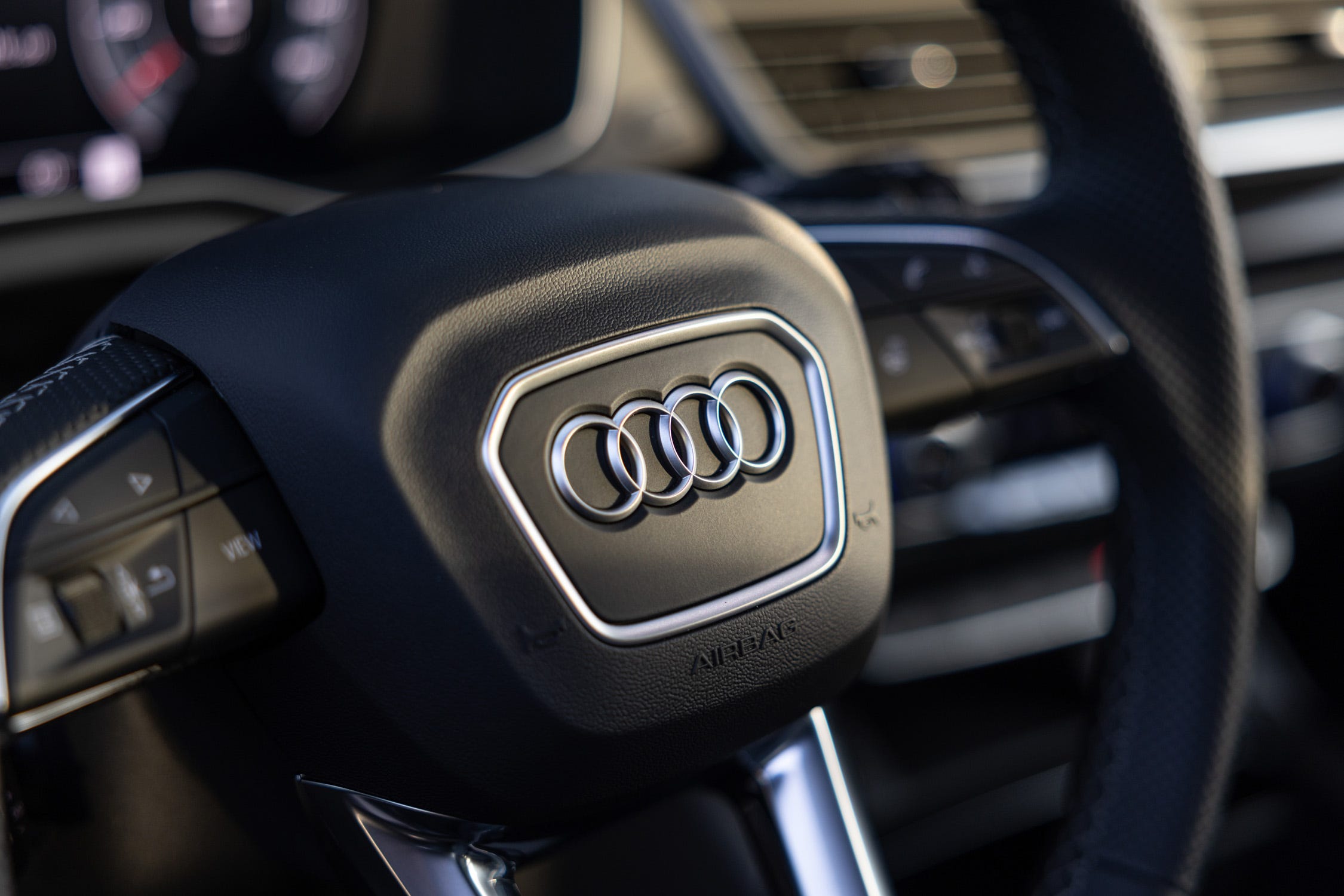
US Pricing & Total Cost Analysis for American Buyers
Complete 2024 US Trim Level Breakdown
US Market Pricing Structure
- Premium ($57,700): 3.0T V6, Quattro AWD, heated seats, panoramic sunroof[1]
- Premium Plus ($62,895): Enhanced technology package, premium interior materials[2]
- Prestige (~$68,000): Top luxury features, advanced driver assistance systems
Current Incentives and Financing for US Buyers
Current dealer incentives vary by region and individual dealership participation, with some locations offering financing rates as low as 4.99% APR for 60 months on select 2024 Audi models for highly qualified customers. Additional incentives may include Costco member discounts up to $2,000 for eligible buyers seeking maximum value[7].
Financing rates depend on credit qualification and current market conditions, with Audi Financial Services typically offering competitive rates for qualified luxury buyers. Lease options provide lower monthly payments but require mileage consideration and gap insurance protection against depreciation that affects luxury vehicles more significantly than mainstream alternatives.
Five-Year Total Cost of Ownership Projection
Monthly fuel costs will exceed mainstream alternatives due to premium gasoline requirements and performance-oriented consumption patterns. Based on EPA ratings of 21 combined mpg, annual fuel expenses will impact total ownership costs significantly compared to efficient competitors in the increasingly fuel-conscious American market[2].
Maintenance costs for luxury German vehicles typically exceed mainstream alternatives, though the 4-year/50,000-mile warranty provides comprehensive coverage during initial ownership. Extended warranty options merit consideration for buyers planning long-term ownership beyond factory coverage periods where repair costs can escalate rapidly.
Insurance premiums reflect the vehicle’s luxury positioning and performance capabilities, requiring quotes from multiple carriers to optimize coverage costs for individual circumstances and driving records that significantly affect premium calculations in the American insurance market.
Regional US Market Considerations
Northern US markets benefit from standard Quattro AWD and heated interior features, providing confidence during harsh winter conditions common across Snow Belt regions where alternative transportation options become limited. These features justify premium positioning for buyers in challenging climate zones.
Southwest markets emphasize cooling system capability and paint durability under extreme UV exposure conditions common in desert regions. Three-zone climate control addresses passenger comfort needs during sustained high-temperature driving across regions where summer temperatures regularly exceed 100 degrees Fahrenheit.
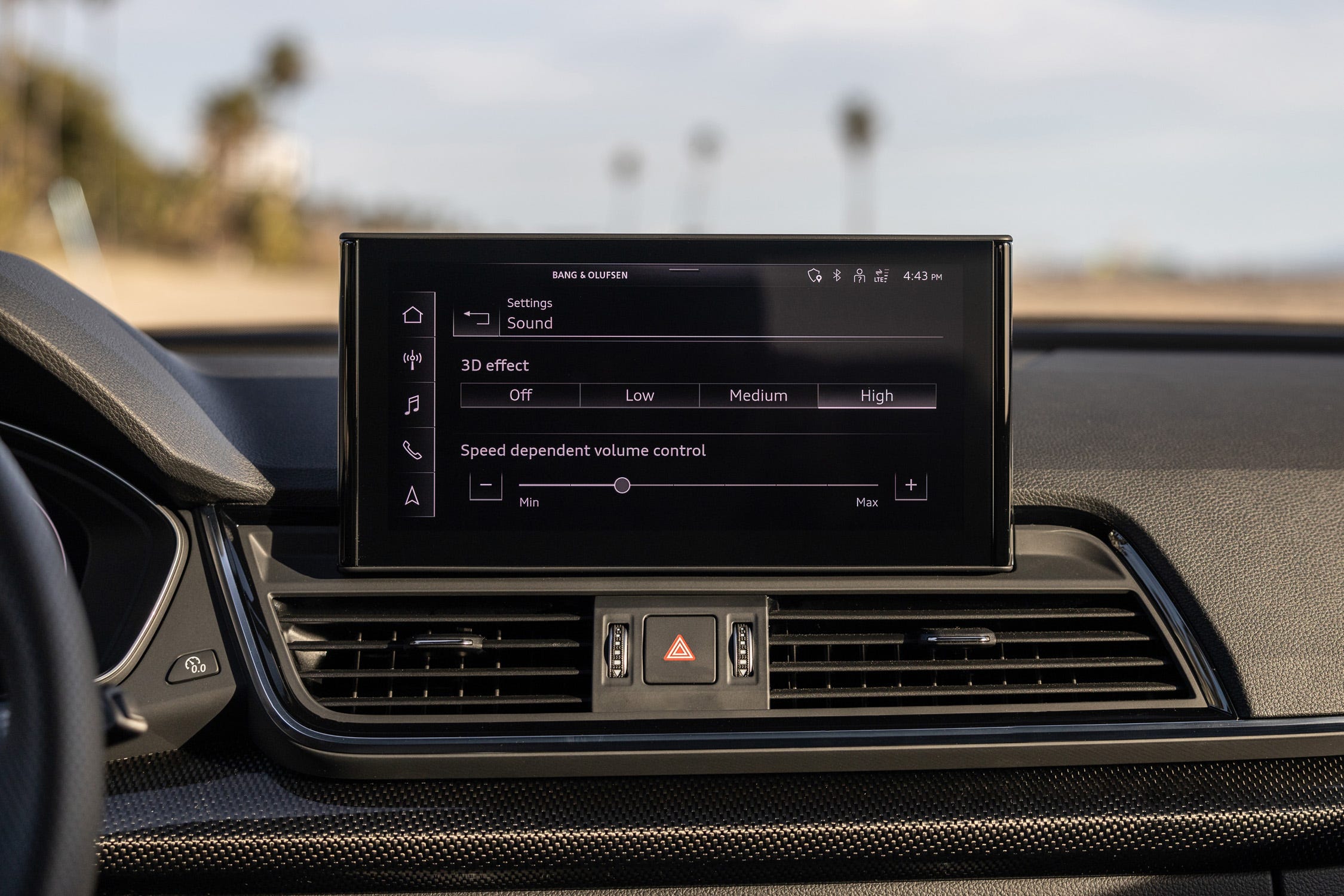
Real US Owner Experience: Authentic American Feedback
What American SQ5 Owners Praise Most
Top Features from US Owner Reviews:
Current US owner feedback emphasizes exceptional ride comfort and build quality meeting German luxury standards that American consumers associate with premium European engineering. Owners appreciate the combination of performance capability and daily usability for diverse American driving conditions from metropolitan commuting to recreational travel[8].
The turbocharged V6 powerplant receives consistent praise for smooth power delivery and impressive acceleration capability during highway merging scenarios common in American metropolitan areas. Owners note the engine provides engaging dynamics while maintaining refinement expectations that distinguish luxury vehicles from mainstream alternatives[8].
Interior appointments and technology integration receive positive feedback, with owners praising the balance of traditional luxury materials and modern connectivity features addressing American consumer preferences for both comfort and convenience during daily use[3].
Common Criticisms from US Owners
Real Issues Reported by American Buyers:
Some owners report concerning reliability issues including complete system failures with warning lights indicating brake, steering, and stabilization system malfunctions. These safety-critical failures have occurred repeatedly in some vehicles, raising concerns about long-term dependability that American buyers typically expect from luxury German brands[9].
Cargo capacity limitations receive criticism from American buyers requiring maximum storage versatility for recreational equipment and family transportation needs. The 27 cubic feet ranks poorly compared to competitors in real-world testing scenarios that matter for practical American family use[3].
Fuel consumption concerns arise from owners expecting better efficiency from the premium powertrain, though highway performance often meets or exceeds EPA estimates. Premium fuel requirements add ongoing expense compared to mainstream alternatives accepting regular gasoline that most American gas stations offer[3].
Long-Term US Ownership Satisfaction Data
Owner satisfaction varies significantly, with 95% of consumers recommending the SQ5 according to some surveys, while others report severe safety concerns requiring manufacturer intervention. This discrepancy suggests quality control inconsistency affecting individual ownership experiences across the American market[9][5].
Some owners have experienced complete vehicle replacement under warranty due to recurring safety system failures, indicating potential manufacturing defects in certain vehicles. These extreme cases represent concerning reliability patterns for a luxury brand that American consumers typically trust for dependable operation[8].
Dealer service experiences vary by location and individual circumstances, though Audi’s established American network provides accessibility for maintenance and warranty service across major metropolitan areas where most luxury vehicle owners reside and expect convenient service access.
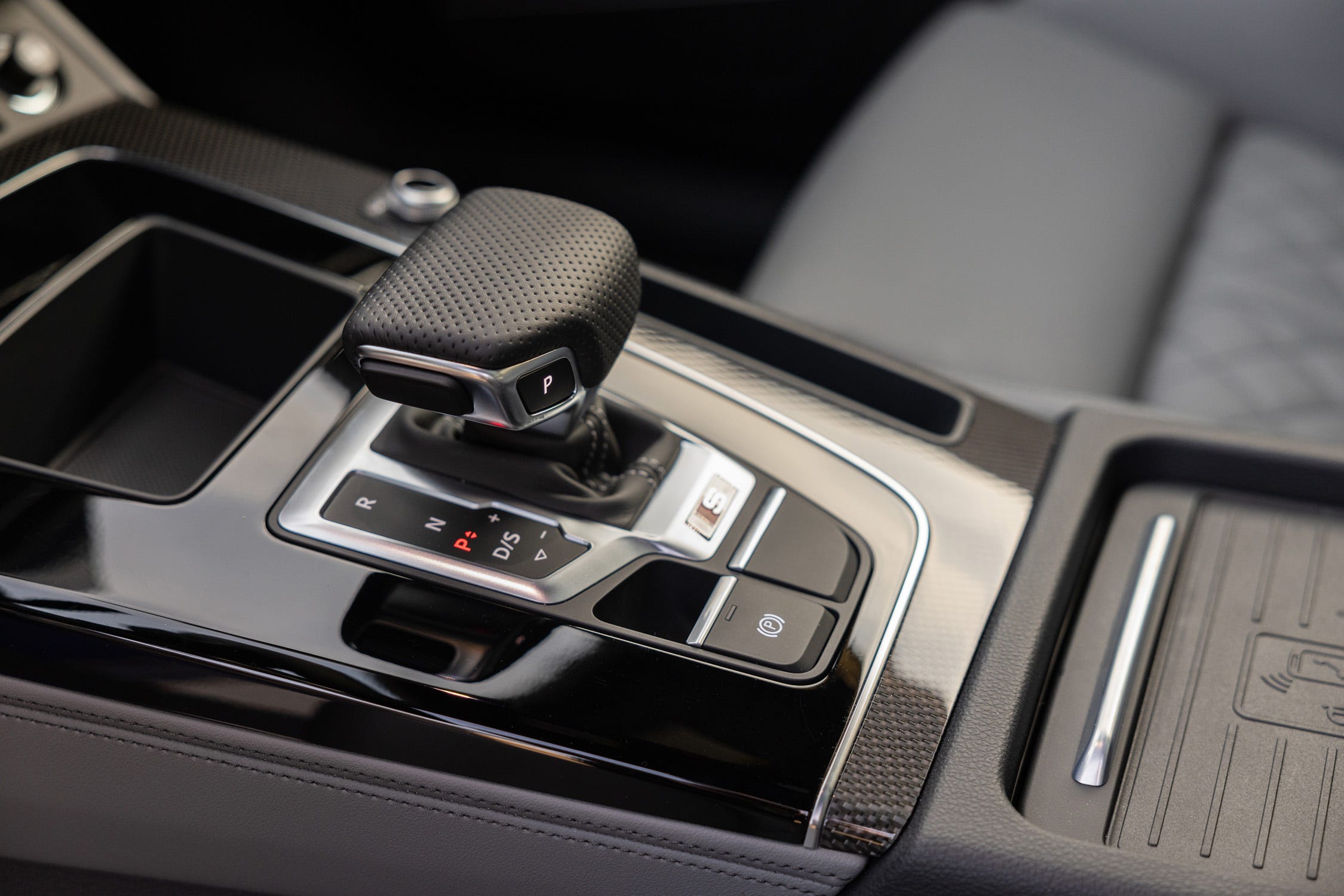
Regional US Climate and Terrain Performance
Cold Weather Performance for Northern States
Standard Quattro AWD and heated interior features address northern US climate requirements effectively across regions experiencing harsh winter conditions that define much of the American climate experience. The system provides confident traction during snow and ice conditions common in northeastern and midwestern states[1].
The turbocharged V6 maintains performance characteristics during extreme cold conditions typical of northern American regions, though efficiency may decrease modestly during harsh winter driving scenarios requiring additional system loads for heating and traction management that affect all vehicles in severe weather conditions.
Winter tire compatibility enhances cold weather capability significantly, with the Quattro system providing confident handling in challenging seasonal conditions across diverse American climates requiring specialized traction equipment for safety during extended winter seasons.
Hot Weather and Sun Belt Suitability
Three-zone automatic climate control proves effective during extreme heat conditions throughout Arizona, Texas, and Florida regions where summer temperatures regularly exceed 100 degrees. The system maintains passenger comfort during sustained high-speed desert highway driving common in southwestern states[1].
Paint and interior material durability receive testing under harsh UV conditions common in southwestern states, ensuring long-term appearance retention meeting German quality standards across American regional variations and seasonal extremes that can damage lesser materials over time.
Cooling system capability maintains optimal engine and transmission temperatures during sustained high-speed driving in extreme heat, providing confidence for American road trip scenarios across diverse climate zones from desert highways to mountain passes that define American recreational travel patterns.
Mountain and Elevation Performance
Turbocharged V6 performance maintains power output at altitude better than naturally aspirated alternatives, providing confidence during mountain driving common across western American states and recreational destinations like Colorado ski resorts where elevation significantly affects vehicle performance.
Quattro AWD traction management assists during steep grade climbing and descent scenarios typical of mountainous terrain, though buyers planning serious mountain recreation should consider dedicated off-road platforms for aggressive trail use rather than luxury-focused vehicles optimized for refined on-road performance characteristics.
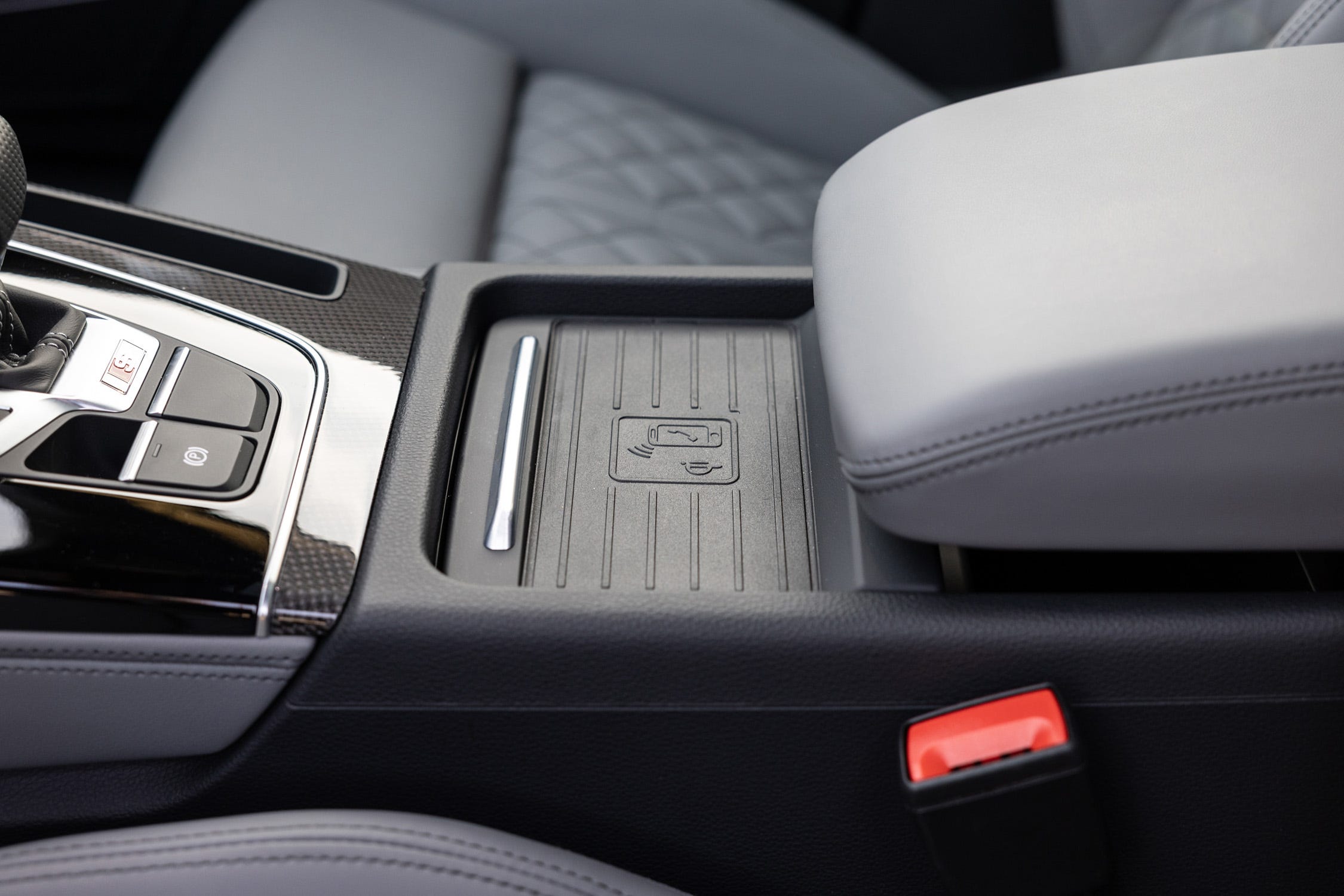
Should American Buyers Purchase the 2024 Audi SQ5?
Ideal Match for These US Buyer Profiles
Affluent American professionals seeking balanced performance luxury without extreme pricing represent the primary target demographic for the 2024 SQ5. These buyers prioritize German engineering quality, established brand prestige, and distinctive styling over mainstream alternatives in the increasingly competitive luxury SUV segment that offers numerous choices.
Tech-savvy buyers aged 35-55 requiring confident highway performance for American interstate travel find compelling acceleration and refinement characteristics. The SQ5 delivers engaging driving dynamics while maintaining luxury SUV practicality for diverse lifestyle requirements from daily commuting to weekend recreation across diverse American terrain.
Conservative luxury buyers preferring traditional appointments over futuristic electric alternatives appreciate the refined gasoline powertrain and proven Quattro AWD technology for reliable year-round capability across American climate zones and terrain diversity that defines the continental United States.
Consider US Market Alternatives If You Prioritize
Maximum cargo capacity for large American family transportation suggests competitors like BMW X5 or three-row alternatives offering superior storage versatility. The SQ5’s 27 cubic feet limits utility for buyers requiring extensive passenger and cargo accommodation simultaneously during family trips across American distances.
Ultimate fuel efficiency suggests BMW X1 or hybrid alternatives offering superior MPG ratings for value-conscious buyers concerned about long-term fuel costs. The X1 achieves 28 combined mpg versus the SQ5’s 21 mpg, representing significant long-term savings for high-mileage drivers[6].
Proven long-term reliability suggests alternatives with better dependability ratings from Consumer Reports and owner surveys, given concerns about system failures reported by some SQ5 owners requiring manufacturer intervention that disrupts ownership satisfaction[4][9].
Final US Market Recommendation with Scoring
Overall Rating for American Buyers: 3.9/5 Stars
- Performance & Efficiency: 4.2/5 – Strong acceleration, refined dynamics, competitive MPG within segment
- Interior & Technology: 4.3/5 – Premium German luxury, comprehensive features, traditional appointments
- Safety & Reliability: 3.2/5 – Pending safety ratings, concerning reliability reports from some owners
- Practicality: 3.7/5 – Adequate for luxury buyers, cargo capacity limitations versus competitors
- Value Proposition: 4.0/5 – Competitive pricing with incentives, established German prestige
Bottom Line Decision for US Market
The 2024 Audi SQ5 delivers refined performance luxury for discerning American buyers seeking German engineering quality at competitive pricing within the luxury SUV segment. According to automotive experts at Autvex, this model best suits affluent US professionals prioritizing balanced driving dynamics and established brand prestige, though reliability concerns and cargo limitations require careful consideration for buyers with specific practical needs.
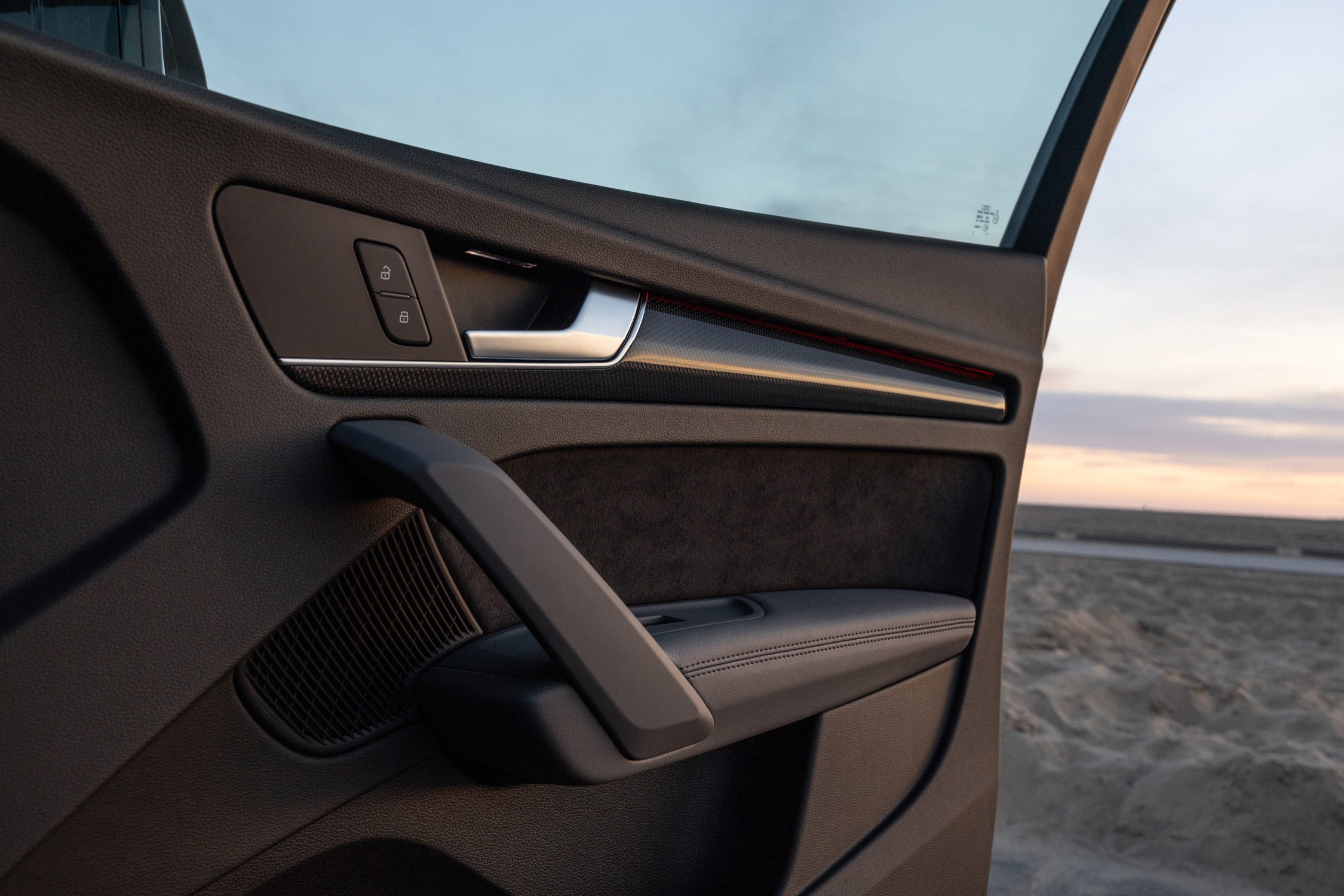
Key Takeaways
- Strong Performance Package: 349 horsepower V6 delivers confident acceleration (4.7 seconds 0-60) while maintaining luxury SUV refinement for diverse American driving conditions
- Competitive Pricing: $57,700 starting price positions favorably against BMW X3 M40i while offering established German luxury appointments and brand prestige
- Efficiency Trade-offs: 21 combined MPG represents reasonable compromise for performance capability, though 28 mpg highway often exceeds EPA estimates in real-world testing
- Technology Integration: Standard safety features and updated connectivity address American preferences for comprehensive driver assistance and smartphone integration
- Reliability Concerns: Some owners report serious system failures requiring manufacturer intervention, suggesting quality control inconsistency affecting ownership satisfaction
- Cargo Space Limitations: 27 cubic feet ranks near bottom of class in real-world testing, limiting appeal for buyers requiring maximum storage versatility
- Regional Adaptability: Standard Quattro AWD and climate features provide confidence across diverse American weather conditions from northern snow to southwestern heat
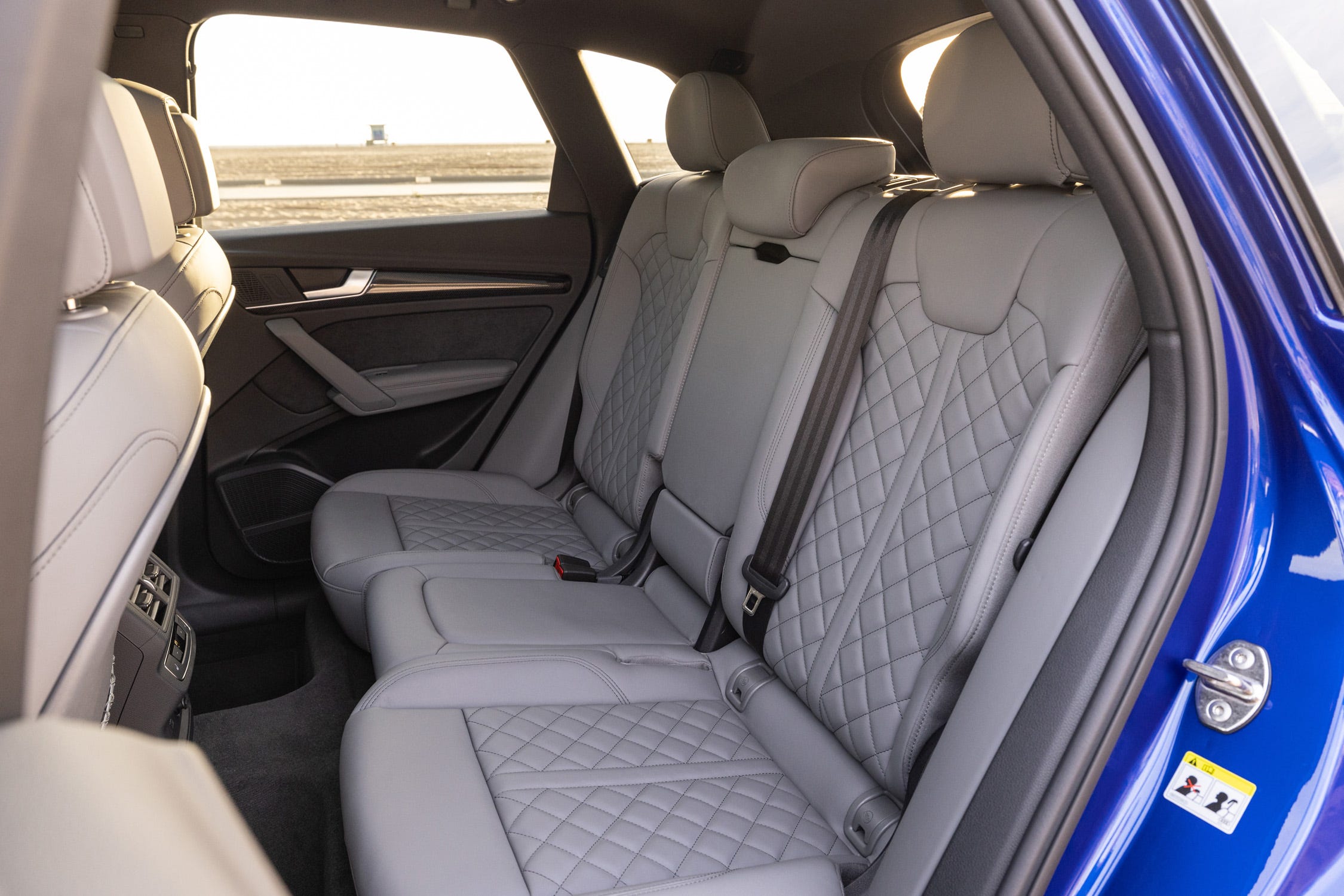
Frequently Asked Questions for US Buyers
What’s the real-world MPG for US highway and city driving?
The 2024 SQ5 achieves EPA ratings of 21 combined (19 city/24 highway), though Car and Driver testing achieved 28 mpg during 75-mph highway runs, significantly exceeding EPA highway estimates. Real-world efficiency depends on driving conditions and individual habits across diverse American terrain[2][3].
How does it compare to BMW X1 and X3 M40i for American buyers?
What are current dealer incentives and typical financing rates?
Current incentives include 4.99% APR financing for 60 months on select models for qualified buyers, plus potential Costco member discounts up to $2,000. Specific offers vary by region and dealer participation, requiring local dealer consultation for current programs available in your area[7].
Is it reliable for long-term ownership based on US data?
Reliability assessments show mixed results – Consumer Reports expects below-average reliability while 95% of owners recommend the vehicle. Some owners report serious system failures requiring vehicle replacement, suggesting quality control inconsistency requiring careful consideration of individual risk tolerance[5][9][4].
Should I choose this over other luxury performance SUVs in 2025?
If you prioritize balanced luxury-performance dynamics, German build quality, and competitive pricing, the SQ5 provides compelling value for conservative American buyers. However, consider BMW X3 M40i for superior performance or X1 for better efficiency and value, depending on individual priorities and budget considerations. For additional model year comparisons, check Autvex’s 2023 Audi SQ5 coverage and 2025 model year updates.
References
- Audi Bedford. (2024). 2024 Audi SQ5 Review | Specs & Features. https://www.audibedford.com/2024-audi-sq5-specs-features-model-review-bedford-oh.htm
- Edmunds. (2024). 2024 Audi SQ5 Specs & Features. https://www.edmunds.com/audi/sq5/2024/features-specs/
- Car and Driver. (2023). 2024 Audi SQ5 / SQ5 Sportback Review, Pricing, and Specs. https://www.caranddriver.com/audi/sq5-2024
- Consumer Reports. (2023). 2024 Audi Q5 Reliability. https://www.consumerreports.org/cars/audi/q5/2024/reliability/
- Audio Range Park. (2024). Exploring the 2024 Audi SQ5: A Comprehensive Guide. https://www.audiorangepark.com/exploring-the-2024-audi-sq5–a-comprehensive-guide.htm
- TrueCar. (2025). Audi SQ5 vs. BMW X1 Comparison. https://www.truecar.com/compare/audi-sq5-vs-bmw-x1/
- Audi San Diego. (2025). 2024 Audi Q5 Incentives, Specials & Offers. https://www.audisandiego.com/global-incentives-search/2024-Audi-Q5-SUV-Offers-US2024AUD8e401a57be3218c6ed73b34.htm
- Edmunds. (2023). 2024 Audi SQ5 Consumer Reviews. https://www.edmunds.com/audi/sq5/2024/consumer-reviews/
- Edmunds. (2023). 2024 Audi Q5 Consumer Reviews. https://www.edmunds.com/audi/q5/2024/consumer-reviews/

I am a senior automotive analyst at Autvex. Expert vehicle evaluations, in-depth reviews, and objective analysis helping readers make informed automotive decisions with years of industry experience.

